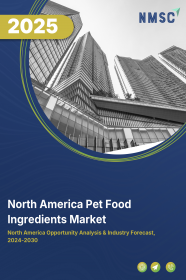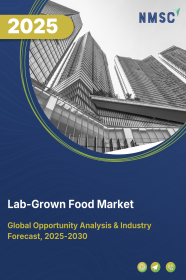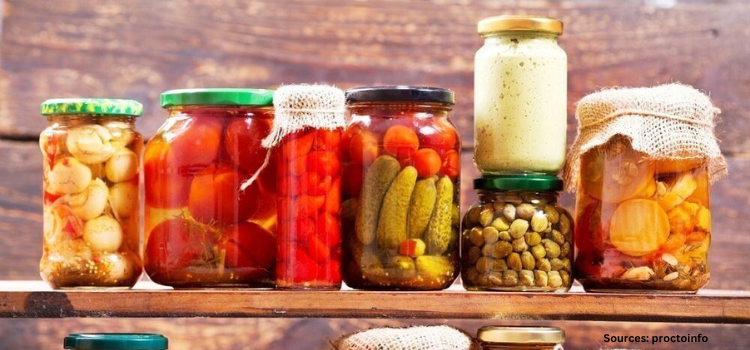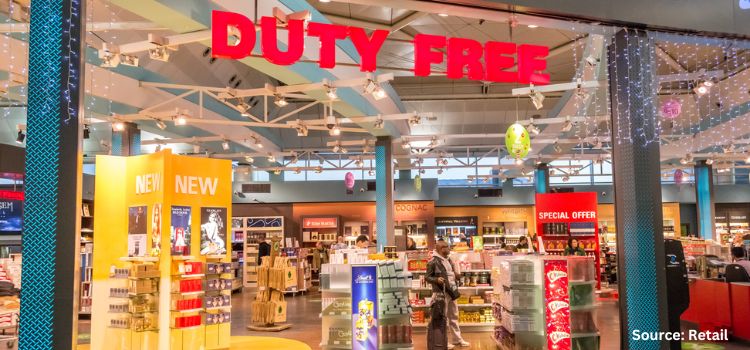
North America Pet Food Ingredients Market by Type (Non-Vegan, Vegan, and Novel Proteins), by Nature (Organic and Inorganic), by Form (Dry and Wet), by Pet Type (Dog, Cat, and Others), and by Distribution Channel (Online and Offline) – Opportunity Analysis and Industry Forecast, 2024–2030
Industry: Retail and Consumer | Publish Date: 27-Jan-2025 | No of Pages: 138 | No. of Tables: 101 | No. of Figures: 66 | Format: PDF | Report Code : RC2821
US Tariff Impact on North America Pet Food Ingredients Market
Trump Tariffs Are Reshaping Global Business
North America Pet Food Ingredients Market Overview
The North America Pet Food Ingredients Market size was valued at USD 13.68 billion in 2023, and is predicted to reach USD 22.45 billion by 2030, at a CAGR of 6.9% from 2024 to 2030. In terms of volume the market size was 2889.76 kilotons in 2023 and is projected to reach 3848.65 kilotons in 2030, with a CAGR of 3.8% from 2024 to 2030.
The pet food ingredients market refers to the development and supply of raw materials essential for creating pet foods to meet the nutritional requirements of different animals. These ingredients are obtained from both plant and animal origins and includes nutrients such as proteins, carbohydrates, fats, vitamins, and minerals.
Through methods such as grinding and blending, the nutritional value and flavor of these ingredients are enhanced to meet pets' specific dietary and health requirements, promoting their overall well-being. The companies prioritize high-grade ingredients and transparency in their supply chains, enhancing product quality and improving brand loyalty. In turn, these practices contribute to the expansion of the pet food ingredients market as pet owners increasingly seek high-quality, nutritious options for their animals.
Rising Pet Ownership Drives the North America Pet Food Ingredients Market
The North American pet food ingredients market is expanding rapidly, driven by increasing pet ownership and a growing preference for treating pets as a family member. This shift has led to a rising demand for premium ingredients that provides nutritional needs of pets, prompting manufacturers to focus on sourcing high-quality proteins, grains, and supplements.
As a result, the market is witnessing innovation in product formulations that prioritize pet health and supplies natural, organic, and specialized options to meet the evolving preferences of pet owners.
Expansion in Disposable Income Boosts the Pet Food Ingredients Market
The increase in disposable income across North America is driving the growth in the pet food ingredients market as individuals and families enjoy higher earnings, they increasingly invest in premium pet food products that emphasize superior quality and nutritional benefits. This shift indicates a growing awareness of pet health, with consumers seeking food options that align with their pets' dietary needs and overall well-being.
Thus, to meet this demand, manufacturers incorporate a blend of organic, natural, and scientifically formulated ingredients, aiming to enhance the nutritional profile of pet food. This approach not only appeals to health-conscious pet owners but also supports the trend towards specialized, high-quality offerings in the pet food market.
The Scarcity of Ingredients Restraints the Market Growth
The limited supply of essential resources poses a significant obstacle to the growth of the pet food ingredient market. With the increasing demand for premium pet food, shortages of crucial ingredients such as meat and certain grains result in supply limitations and rising production costs.
This scarcity affects manufacturers’ abilities to deliver high-quality pet food and drives them to consider alternative options that leads to diminish the nutritional quality and overall integrity of the final products.
Adoption of Sustainable Protein Sources Creates Growth Opportunity for the Market
The integration of sustainable protein options such as egg-based proteins, tofu waste, black soldier flies, and silkworms is anticipated to create new opportunities in the market. These alternatives are increasingly valued for their impressive nutritional profiles and reduced environmental impact relative to conventional proteins such as beef and pork.
Egg proteins and tofu dregs not only contributes essential nutrients but also aid to decreasing food waste. Furthermore, insect proteins including those from black soldier flies and silkworms, present an efficient way of producing protein, offering sustainable alternatives in the pet food ingredient industry.
The U.S. Holds the Dominant Market Share in North America Pet Food Ingredients Market, with the Highest Projected CAGR till 2030
The rising pet ownership in the U.S. and the trend of treating pets as family members are significantly boosting the demand for premium pet food ingredients. Pet owners are prioritizing natural, premium ingredients to enhance their pets' nutrition, contributing to the overall growth of the pet food ingredients market. According to the American Pet Products Association, 82 million households in the U.S. own a pet in 2024.
This considerable increasing pet ownership directly effects on the pet food ingredients market's expansion, encouraging manufacturers to effectively respond to the changing preferences and nutritional needs of pet owners. Consequently, the focus on developing high-quality products that satisfy these preferences reflects a broader trend towards improved pet care and overall health.
Moreover, the growing expenditure on pet food within the region propels the expansion of the pet food ingredients market as pet owners increasingly prioritize investments in premium and nutritious products for their pets. This shift intensifies the demand for high-quality ingredients that supply essential nutrients and satisfy specific dietary needs, indicating focus on pet health and wellness.
As per American Pet Products Association, total expenditures in the U.S. pet industry reached USD 147 billion in 2023. The surge of high-quality pet food ingredients is evident in the evolving preferences of pet owners, with a growing emphasis on nutrition and health in their purchasing decisions.
Competitive Landscape
The various market players operating in the North America pet food ingredients industry includes Cargill Incorporated, BASF SE, Archer Daniels Midland Company (ADM), Koninklijke DSM N.V., The Scoular Company, Roquette Freres, Kemin Industries Inc., Symrise AG, Darling Ingredients Inc., Mowi ASA, and others.
North America Pet Food Ingredients Market Key Segments
By Type
-
Non-Vegan
-
Beef
-
Chicken
-
Fish
-
Others
-
-
Vegan
-
Soyabeans
-
Peas
-
Lentils
-
Others
-
-
Novel Proteins
By Nature
-
Organic
-
Inorganic
By Form
-
Dry
-
Wet
By Pet Type
-
Dog
-
Cat
-
Others
By Distribution Channel
-
Online
-
Offline
By Country
-
The U.S.
-
Canada
-
Mexico
Key Players
-
Cargill Incorporated
-
BASF SE
-
Archer Daniels Midland Company (ADM)
-
Koninklijke DSM N.V.
-
The Scoular Company
-
Roquette Freres
-
Kemin Industries Inc.
-
Symrise AG
-
Darling Ingredients Inc.
-
Mowi ASA
REPORT SCOPE AND SEGMENTATION:
|
Parameters |
Details |
|
Market Size in 2023 |
USD 13.68 Billion |
|
Revenue Forecast in 2030 |
USD 22.45 Billion |
|
Growth Rate |
CAGR of 6.9% from 2024 to 2030 |
|
Market Volume in 2023 |
2889.76 Kilotons |
|
Volume Forecast in 2030 |
3848.65 Kilotons |
|
Growth Rate (Volume) |
CAGR of 3.8% from 2024 to 2030 |
|
Analysis Period |
2023–2030 |
|
Base Year Considered |
2024 |
|
Forecast Period |
2024–2030 |
|
Market Size Estimation |
Billion (USD) |
|
Growth Factors |
|
|
Countries Covered |
3 |
|
Companies Profiled |
10 |
|
Market Share |
Available for 10 companies |
|
Customization Scope |
Free customization (equivalent up to 80 working hours of analysts) after purchase. Addition or alteration to country, regional, and segment scope. |
|
Pricing and Purchase Options |
Avail customized purchase options to meet your exact research needs. |

















 Speak to Our Analyst
Speak to Our Analyst





















